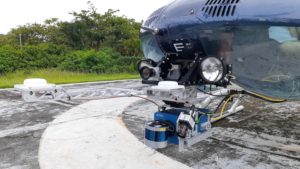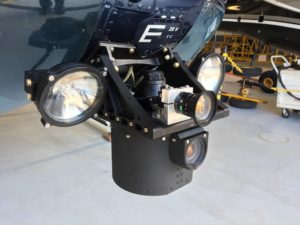 Embraer and Eve Evaluate Autonomous eVTOL Flight Technologies
Embraer and Eve Evaluate Autonomous eVTOL Flight Technologies
by DRONELIFE Staff Writer Ian M. Crosby
Aerospace company Embraer recently finished conducting a series of experimental flight operations with its new autonomous system technologies, designed to enable safe autonomous operations in urban environments. The flights were carried out in Rio de Janeiro, Brazil, in order to observe how the new technologies performed under real flight conditions.
 Working with its subsidiary Eve UAM, LLC, as well as partners Daedalean, Iris Automation and Near Earth Autonomy, Embraer examined various scenarios for take-off, climb, cruise, approach and landing flight phases. Traditional piloted helicopters from Eve partner Helisul Aviação were deployed to collect data and evaluate the technologies in real-time as part of the Embraer Autonomous Systems project (“Project EASy”).
Working with its subsidiary Eve UAM, LLC, as well as partners Daedalean, Iris Automation and Near Earth Autonomy, Embraer examined various scenarios for take-off, climb, cruise, approach and landing flight phases. Traditional piloted helicopters from Eve partner Helisul Aviação were deployed to collect data and evaluate the technologies in real-time as part of the Embraer Autonomous Systems project (“Project EASy”).
Starting with Crewed Operation: Moving Towards Autonomous eVTOL Flight
“This project allowed us to evaluate technologies in real-time and also collect lots of data that will later be used in simulations,” said Embraer Head of Autonomous Systems Julio Bolzani. “It is important to note that we are not going straight to fully autonomous operations. As Eve begins operations, pilots will be on board and will also benefit from the application of these technologies through a safer and simplified vehicle operation until we reach a fully certified autonomous flight system for Urban Air Mobility.”
 The project is also related to Eve’s Concept of Operations (CONOPS), which was initiated last year with collaboration from partners and government entities for the conversion of acquired knowledge into working data and analysis framework in order to better inform the future of Urban Air Mobility.
The project is also related to Eve’s Concept of Operations (CONOPS), which was initiated last year with collaboration from partners and government entities for the conversion of acquired knowledge into working data and analysis framework in order to better inform the future of Urban Air Mobility.
“All information and data raised in this project, as well as the technical solutions under development, will set the path for fully autonomous flight of eVTOLs in the future,” said Eve co-CEO Andre Stein. “We are thrilled with all operational aspects exercised and data acquired in this project and its direct connection to our CONOPS. These are solid steps for safely introducing future autonomous operations and accelerating the affordability and growth of the UAM market.”
Read more about eVTOLs and passenger drones:
- Multi Modal Mobility Hubs and UAM: From the Floor of Amsterdam Drone Week
- Embraer Urban Air Mobility Company, Eve, Joins NYSE: Promises Flying Cars in 2026
- What Does Urban Air Mobility Need to Thrive? Vertiport Automation; An Op Ed by ANRA Technologies’ Brent Klavon
- DRONEII: Flying Cars, Air Taxis, and eVTOLs -the Varieties and Specifications of Passenger Drones [Infographic]
 Ian attended Dominican University of California, where he received a BA in English in 2019. With a lifelong passion for writing and storytelling and a keen interest in technology, he is now contributing to DroneLife as a staff writer.
Ian attended Dominican University of California, where he received a BA in English in 2019. With a lifelong passion for writing and storytelling and a keen interest in technology, he is now contributing to DroneLife as a staff writer.

Miriam McNabb is the Editor-in-Chief of DRONELIFE and CEO of JobForDrones, a professional drone services marketplace, and a fascinated observer of the emerging drone industry and the regulatory environment for drones. Miriam has penned over 3,000 articles focused on the commercial drone space and is an international speaker and recognized figure in the industry. Miriam has a degree from the University of Chicago and over 20 years of experience in high tech sales and marketing for new technologies.
For drone industry consulting or writing, Email Miriam.
TWITTER:@spaldingbarker
Subscribe to DroneLife here.







[…] Embraer Strikes Forward In the direction of Autonomous eVTOL Flight: Venture EASy […]